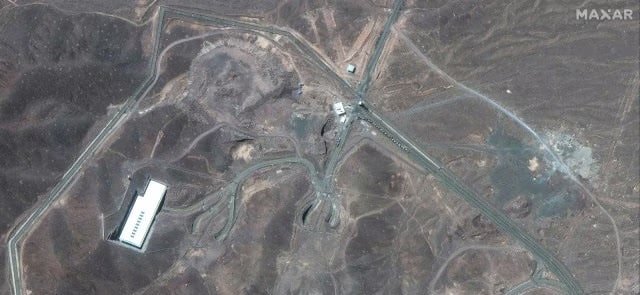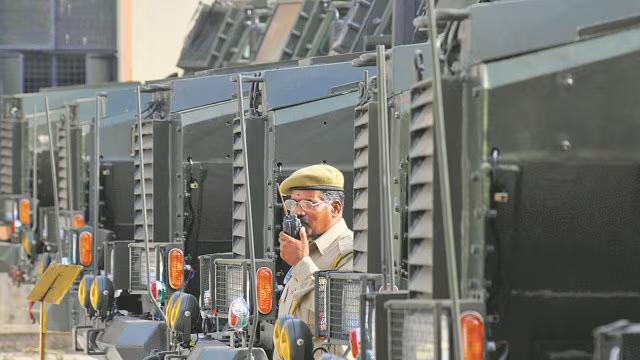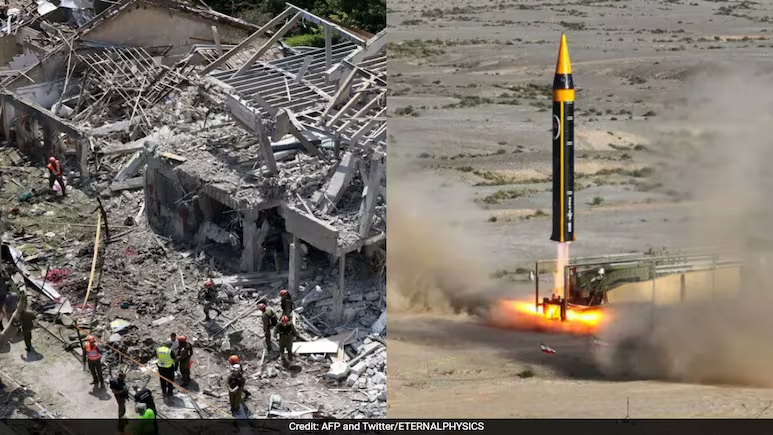In a world that was already sizzling with geopolitical tensions, the recent American military strikes on Iran’s nuclear infrastructure have put a huge log on an already hot fire. The United States has targeted three of Iran’s key nuclear facilities – Fordow, Natanz and Esfahan – in the Saturday attack. The precision strikes were presented as a bold move amid the intensifying confrontation between Israel and Iran. But the real shocker to the world was the targets: nuclear enrichment plants.
An Unprecedented Military Decision
And this unprecedented military decision has not just catapulted the US directly into the Iran-Israel clash, it has raised concerns over the safety of nuclear power. The worry was both precise and chilling – would the strikes cause radiation leaks, contamination or even a nuclear catastrophe?
The Anatomy of the Strike
The named facilities – Fordow, Natanz and Esfahan – are prominent players in Iran’s nuclear program. All three have been investigated before, notably by the International Atomic Energy Agency, the nuclear monitoring preventer of the United Nations.
- Fordow was a secret uranium enrichment facility built deep into a mountain.
- Natanz is Iran’s largest uranium enrichment facility and has been a center of international debate over the country’s nuclear program for many years.
- Fuel facilities Esfahan is site of a nuclear fuel conversion facility.
Iranian state media described the facilities as having been struck with precision weapons. US President Donald Trump billed the strikes as a way to force Iran into de-escalation. “If peace is not realized quickly, we will be ready to go back to war with another approach, and in that case it will be a new war for independence,” Trump warned in remarks of just over three minutes long.
The choice, according to reports, was made after days of intense high-level discussions, and already before a two-week time frame Trump had reportedly set for deciding whether to pursue military action.
Radiation Fears and Public Anxiety
As word of the strikes emerged in the early afternoon, fears of a radiation leak began to spread across borders. Any attack on a nuclear site has for decades been viewed as a high-stakes operation by the global community, not only for the country being attacked, but also for the region and beyond.
It has been an international norm that in armed conflicts the targets must not include nuclear facilities. The IAEA has repeatedly expressed this view, underscoring the potential for such attacks to be calamitous for nuclear safety and public health.
But Iran and international monitors moved swiftly to tamp down fears. Iran’s Nuclear Regulatory Authority also said in a statement on the country’s state broadcaster that “no traces of contamination have been reported.” “There is no threat to the population living near these sites,” added the National Nuclear Safety System Centre.
In support of that statement, the International Atomic Energy Agency reported that no rise in radiation levels was observed at any of the three affected sites. That view was repeated by Hassan Abedini, a deputy political head of Iran’s state broadcaster who said enriched uranium had already been transferred from the facilities and that “there are no more materials there that, if targeted, would cause radiation and be harmful for our compatriots.”
Also read, Donald Trump to decide in two weeks whether US will strike Iran: White House
Evacuations and Preemptive Measures
Iranian officials have said that the nuclear sites have been emptied in anticipation of potential attacks, and that nuclear material was moved as a precaution. Given the timing of this early move it might just have avoided another radioactive leak.
The Iranian Ministry of Defense said Saturday that the plants had been producing at below maximum capacity levels and that there were no hazardous materials present at the time of the attacks that could cause a radiation leak. If confirmed, these safety measures indicate a high level of preparedness and perhaps even prior warning of the attacks.
The preemptive evacuation corresponds to information from the IAEA, which said there was no release of radioactive material into the environment surrounding the facilities – including after earlier Israeli strikes at similar targets.
A Dangerous Precedent
Still, the attacks have rekindled a global discussion about the safety and security of nuclear installations in a war. The strike on nuclear plants, even those dormant or evacuated, is one fraught with risk and consequence.
The IAEA’s longstanding cautions against such moves are based on decades of nuclear safety protocols and post-accident lessons from calamities, including Chernobyl and Fukushima – the former striking under entirely different circumstances but both highlighting the enduring legacy of nuclear accidents.
There was no radiation release this time, however it’s the psychological and political harm we’ve suffered that will have the most lasting effect, experts say. The very perception of a nuclear disaster can create mass panic, economic reverberations and the breakdown of diplomacy.
Trump’s Calculated Warning
The manner of President Trump during the announcement was resolute. He left no doubt that the strikes were not the end of American military involvement but a shot across the bow. “We shall pursue other targets as well with precision, speed and skill,” he said – a telling phrase that also marked the seriousness of the message meant for Tehran.
This aspect of the development evokes a new direction for U.S. strategy, one where military precision-powered offensive actions are pursued not only for tactical ends, but also as a form of geopolitical messaging. The goal is to pressure Iran to pull back from its confrontational posture with Israel and return to peace talks, U.S. officials say.
But critics say the move could have the reverse effect – uniting Iran’s hard-liners, weakening moderates and pushing Tehran closer still to full scale retaliation.
Also read, Donald Trump to decide in two weeks whether US will strike Iran: White House
Israel’s Role and Prior Strikes
It’s also worth mentioning that previous Israeli strikes on Iranian installations had similarly raised radiation fears, though there wasn’t any confirmed contamination at that time, either. In those attacks, no release of radioactive material was detected by the IAEA, either. But every blow weakens the fragile sense of security around such sites.
Taken together, these attacks could cause Iran to harden its nuclear sites or speed up enrichment, both of which would raise the risk profile in the region.
The Broader Fallout
It is not just the risk of radiation which makes the incident so note-worthy, but the signal that can be inferred from it, about what might constitute the legitimate military targets of the contemporary battlefield. By targeting nuclear sites, the United States has crossed a threshold the international community had long considered to be taboo.
While the immediate radiation risk has dissipated, the longer-term diplomatic and security fallout is still playing out. Things that had already been damaged, including trust between nations, faith in international safety protocols and the sanctity of nuclear sites, are being destroyed.
Conclusion : US Attack
The American decision to bomb Fordow, Natanz and Esfahan was not simply a strategic attack, it was a message. It suggests that red lines around nuclear infrastructure are being muddied, perhaps irrevocably. With or without radioactive contamination, the psychological shock and geopolitical fallout is real and significant.
As long as Iran continues to guarantee there is no risk of radiation and the IAEA verifies that to be the case, the direct threat may have been prevented. But the bigger question is this: What comes next?
With the sound of saber-rattling getting louder by the day and diplomatic exhaust pipes running empty, the world must come to the uncomfortable conclusion that the battlefield now includes nuclear sites. And that awareness in itself is a treacherous new rule of war.
FAQs
1. Which Iranian nuclear facilities were bombed by the US?
The United States bombed three nuclear facilities: Fordow, Natanz, and Esfahan.
2. Was there any radiation leak reported after the strikes?
No, both Iranian officials and the IAEA confirmed that no radiation leak or contamination occurred.
3. Why did the US carry out these strikes?
The US aimed to force Iran into de-escalation amid rising tensions with Israel and to prevent further nuclear threat escalation.
4. What has been the global reaction to these strikes?
There is widespread concern over targeting nuclear sites in warfare, with fears about setting a dangerous precedent despite the absence of radiation.
5. Did these strikes increase nuclear proliferation risks?
Yes, experts believe it could push Iran to harden facilities or accelerate enrichment, increasing regional and global risks.
Reference
Stay updated with all the latest news and insights – News Of US






